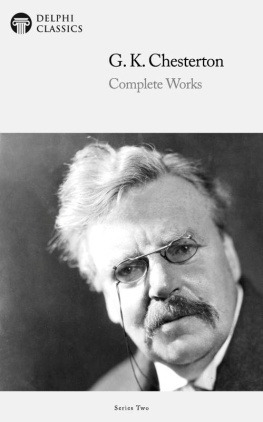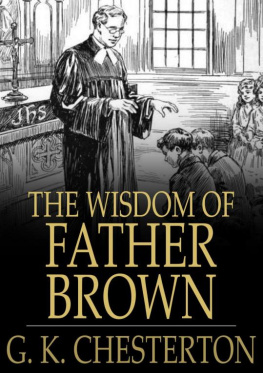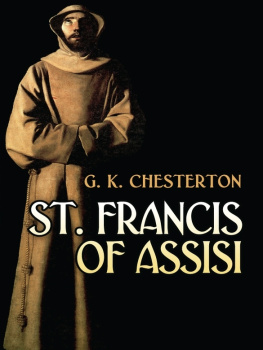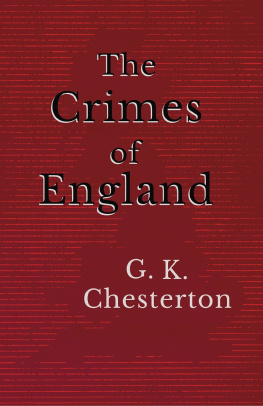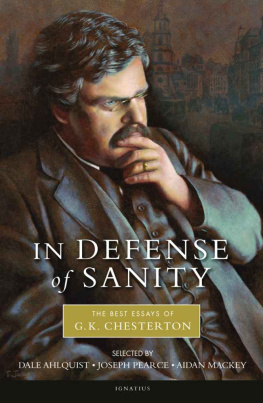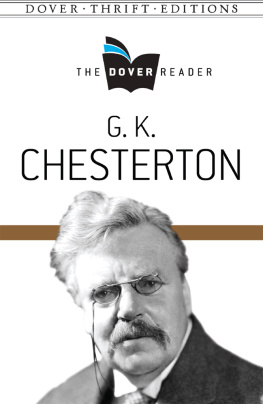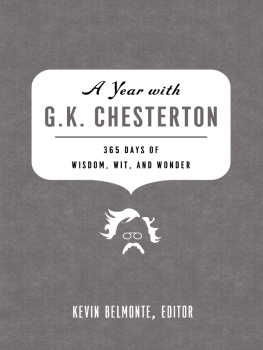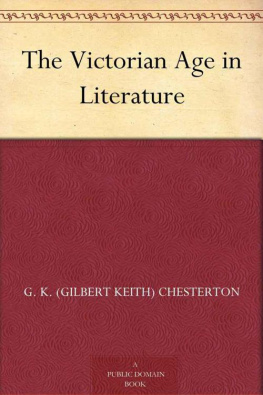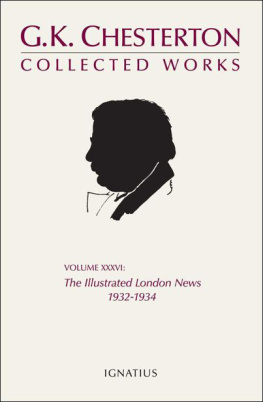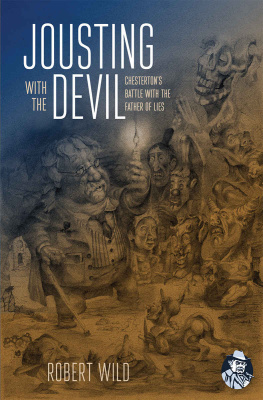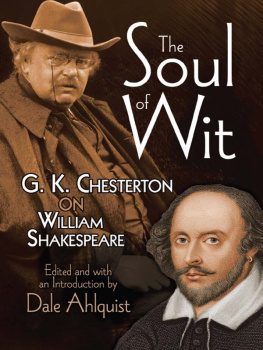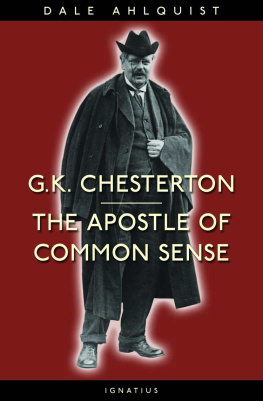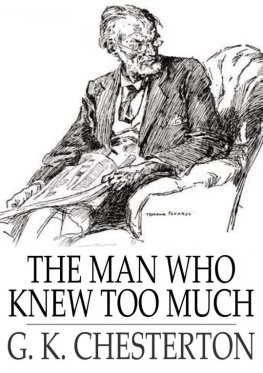
The Complete Works of
G. K. CHESTERTON
(18741936)

Contents

Delphi Classics 2014
Version 3


Browse our Main Series

Browse ou r Ancient Classics

Browse our Poets

Brow se our Art eBooks

Browse our Classical M usic series

The Complete Works of
G. K. CHESTERTON

By Delphi Classics, 2014
COPYRIGHT
Complete Works of G. K. Chesterton

First published in the United Kingdom in 2014 by Delphi Classics.
Delphi Classics, 2014.
All rights reserved. No part of this publication may be reproduced, stored in a retrieval system, or transmitted, in any form or by any means, without the prior permission in writing of the publisher, nor be otherwise circulated in any form other than that in which it is published.
ISBN: 9781908909497
Delphi Classics
is an imprint of
Delphi Publishing Ltd
Hastings, East Sussex
United Kingdom
Contact: sales@delphiclassics.com
www.delphiclassics.com
Parts Edition Now Available!

Did you know you can now purchase the Delphi Classics Parts Edition of this author and enjoy all the novels, plays, non-fiction books and other works as individual eBooks? Now, you can select and read individual novels etc. and know precisely where you are in an eBook. You will also be able to manage space better on your eReading devices.

The Parts Ed ition is only available direct from the Delphi Classi cs website.
For more information about this exciting new format and to try free Parts Edition downloads , please visit thi s li nk .

From classic detective masterpieces to edge-of-your-seat mysteries, explore the Delphi Classics range of exciting Thrillers
Browse our most popular Thrillers here

Father Brown Stories

G. K. Chestertons birthplace Campden Hill, Kensington, London

The authors birthplace

Kensington, 1870
The Innocence of Father Brown (1911)

Illustrated by Sydney Seymour Lucas
Father Brown is Chestertons most famous creation, appearing in 52 short stories, which were later compiled in five books. The stories originally appeared in journals such as The Saturday Evening Post and The Story-Teller , with the first story appearing in the former magazine on July 23, 1910. The stories were an instant success.
Chesterton based the character on Father John OConnor (18701952), a parish priest in Bradford who was involved in the authors conversion to Catholicism in 1922. Father Brown is depicted as a short, stumpy Catholic priest, from Cobhole in Essex, and now working in London, with shapeless clothes and a large umbrella, and uncanny insight into human evil. Unlike the more famous fictional detective Sherlock Holmes, Father Browns methods tend to be intuitive rather than deductive. He makes his first appearance in the story The Blue Cross and continues through the five volumes of short stories, often assisted by the reformed criminal Flambeau. Father Brown is characteristically humble and tends to handle crimes with a steady, realistic approach, he believes in the supernatural as the greatest reason of all.
The Innocence of Father Brown, the first book of Father Brown stories, was published in 1911, followed by The Wisdom of Father Brown (1914), The Incredulity of Father Brown (1926), The Secret of Father Brown (1927) and The Scandal of Father Brown (1935).

The 1911 first edition of this story collection
CONTENTS

The Parish of the Holy Spirit, Heckmondwike, where Father John OConnor, the inspiration for Father Brown, preached
The Blue Cross

B ETWEEN THE SILVER ribbon of morning and the green glittering ribbon of sea, the boat touched Harwich and let loose a swarm of folk like flies, among whom the man we must follow was by no means conspicuous nor wished to be. There was nothing notable about him, except a slight contrast between the holiday gaiety of his clothes and the official gravity of his face. His clothes included a slight, pale grey jacket, a white waistcoat, and a silver straw hat with a grey-blue ribbon. His lean face was dark by contrast, and ended in a curt black beard that looked Spanish and suggested an Elizabethan ruff. He was smoking a cigarette with the seriousness of an idler. There was nothing about him to indicate the fact that the grey jacket covered a loaded revolver, that the white waistcoat covered a police card, or that the straw hat covered one of the most powerful intellects in Europe. For this was Valentin himself, the head of the Paris police and the most famous investigator of the world; and he was coming from Brussels to London to make the greatest arrest of the century.
Next page
